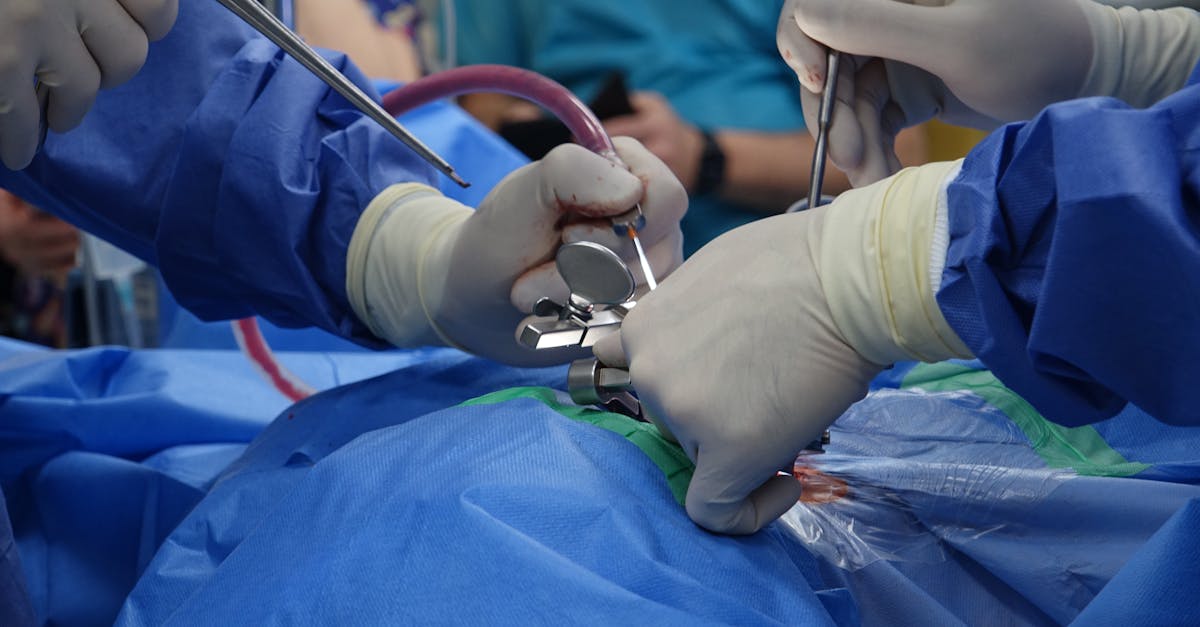|
In Short, Combatting Tech Neck refers to a collection of strategies aimed at alleviating screen-induced strain that affects many individuals in today’s digital age. This condition arises from prolonged screen usage and can result in significant discomfort and tension in the neck. The benefits of addressing tech neck include enhanced posture, reduction of neck pain, and improved overall well-being. At Pulse Align, a non-invasive and innovative approach utilizes gentle stimulation to promote neuromuscular health and posture correction. This holistic method empowers the body to recalibrate itself, leading to a healthier and more balanced lifestyle. |
In today’s digital age, many individuals experience tech neck due to prolonged screen time, leading to discomfort and poor posture. Pulse Align offers innovative solutions that focus on neuromuscular recalibration to alleviate the strain associated with this common condition. Through gentle stimulation and tailored exercises, clients can improve their posture, relieve muscle tension, and ultimately enhance their overall well-being. By addressing the underlying causes of neck pain, Pulse Align empowers individuals to regain their freedom of movement and enjoy a healthier, pain-free lifestyle.

Reclaim Your Balance with Pulse Align
In today’s fast-paced digital age, many individuals experience discomfort due to prolonged screen time and poor posture, commonly known as tech neck. At Pulse Align, we offer a non-invasive, innovative method that helps restore the body’s natural balance and posture through gentle, imperceptible pulses. This unique approach aims to promote muscle tone symmetry, supporting the body’s natural processes and leading to reduced muscle and joint tension.
The Gentle Art of Recalibration
Our focus at Pulse Align is not on addressing discomfort or conditions directly. Instead, we help the body recalibrate itself naturally, allowing for an improved sense of balance and comfort. Clients often find that as their muscle tone becomes more balanced, their posture naturally improves, creating a positive ripple effect on their overall well-being. This gentle, alternative method fosters an environment where the body can thrive, cultivating a greater sense of ease throughout daily life.
Personalized Approaches for All Ages
Pulse Align believes in a personalized approach tailored to meet the unique needs of each client. Many individuals, including families, have reported notable improvements in their daily experiences, reflecting the effectiveness of our services in enhancing well-being. Our supportive environment is perfect for all ages, including children and pregnant women, ensuring that everyone can benefit from enhanced comfort and balance. Clients from various locations, such as La Prairie and Mont-Royal, have shared positive experiences, appreciating the nurturing techniques that help them manage the challenges of modern life.
Visit Us and Transform Your Wellness Journey!
We invite you to learn more about how Pulse Align can support you and your family on your journey to well-being. Explore our locations including Châteauguay, Sainte-Marie, and Terrebonne by visiting our pulsealign.com/our-locations/ page. If you are ready to experience the benefits of our safe, non-invasive, and family-friendly approach, book your consultation with us today. Please remember that while our services complement wellness, they work alongside your healthcare team’s guidance for any medical concerns.
Experience the Pulse Align Difference
Step into a life of improved posture and reclaimed balance with Pulse Align—your partner in nurturing your body’s natural abilities. Don’t wait any longer; take action towards a healthier you today!
- Ergonomic Workstation Setup: Adjust monitor height to eye level to maintain a neutral neck position.
- Regular Breaks: Schedule short pauses to stand, stretch, and mitigate muscle fatigue.
- Neck Pain Exercises: Integrate targeted stretching routines to improve muscle flexibility.
- Posture Awareness: Stay conscious of posture throughout the day and make necessary adjustments.
- Pulse Align Techniques: Utilize gentle recalibration methods to enhance neck and muscle function.
- Stress Management: Engage in activities such as yoga or meditation to alleviate tension.
- Hydration: Maintain proper hydration to support overall muscle health and function.

In our increasingly digital world, the rise of tech neck—pain and discomfort associated with prolonged screen use—has become a prevalent issue. Factors such as poor posture and extensive time spent in front of devices contribute to strain on the neck, leading to undesirable symptoms. Pulse Align addresses these challenges through a holistic approach aimed at neuromuscular recalibration, helping individuals reclaim their comfort and enhance their well-being. This guide will explore practical strategies and insights into how Pulse Align can alleviate the effects of tech neck.
Understanding Tech Neck Symptoms
Tech neck manifests through various symptoms, including:
- Neck pain: Often radiating to the arms or shoulders.
- Stiffness: A sensation of tightness that limits motion when turning the head.
- Headaches: Triggered by tension in the neck muscles.
- Fatigue: Resulting from the constant strain of poor posture.
Recognizing these symptoms is essential for addressing the underlying issues effectively. Being proactive in implementing solutions can significantly enhance your overall quality of life.
The Importance of Ergonomics
Creating an ergonomic workspace is a vital step in combating tech neck. Simple adjustments can promote better posture and reduce unnecessary strain on the neck:
- Monitor Position: Ensure that screens are at eye level to maintain a neutral neck posture.
- Chair Support: Use chairs that provide proper lumbar support and encourage alignment.
- Frequent Breaks: Schedule regular breaks to stand, stretch, and readjust your posture.
Implementing these ergonomic strategies not only alleviates discomfort but also fosters a more productive and comfortable working environment.
Pulse Align’s Holistic Approach
Pulse Align employs a gentle and innovative method focusing on neuromuscular recalibration. Through specialized treatments, clients experience a natural restoration of balance in the body:
The approach includes:
- Gentle Stimulation: This method aids in relaxing tense muscles, promoting a healthier state of function.
- Tailored Techniques: Each treatment is customized to address individual needs, considering specific symptoms and challenges.
- Education and Support: Clients are empowered with knowledge about posture and body dynamics, helping them to not only alleviate existing pain but also prevent future issues.
By focusing on the body’s innate ability to heal itself, Pulse Align encourages long-lasting improvements in posture and comfort.
Incorporating Movement Practices
Engaging in specific neck pain exercises can augment the benefits gained through Pulse Align’s methods. Simple routines, such as:
- Chin Tucks: Align the neck over the shoulders.
- Doorway Stretch: Stretch the chest and shoulders to relieve tension.
- Neck Side Bends: Promote flexibility and decrease tightness.
Incorporating these exercises into your daily routine can contribute to better posture and overall neck health.
The prevalence of tech neck in our modern world necessitates a proactive approach to wellness. By embracing ergonomic practices, understanding symptom management, and periodically engaging with supportive therapies like those offered by Pulse Align, individuals can significantly mitigate screen-induced strain. Committing to a holistic methodology not only fosters neuromuscular health and symmetry but also nurtures the body’s natural capacity for self-recalibration. Join the journey toward a more balanced and pain-free life, embracing the transformative effects of mindful interventions and holistic support.
| Issue | Pulse Align Solutions |
|---|---|
| Poor Posture | Encouragement of ergonomic practices to maintain alignment and reduce strain. |
| Muscle Tension | Gentle techniques to promote relaxation and alleviate tightness. |
| Screen-Induced Stress | Mindfulness and balance practices integrated into sessions for holistic wellness. |
| Frequent Discomfort | Recalibration methods allowing the body to self-correct and restore comfort. |
| Limited Mobility | Movement practices encouraging freedom of motion and improved flexibility. |
| Digital Fatigue | Strategies to incorporate regular breaks and stretches for rejuvenation. |
| Inadequate Recovery | Supportive environment fostering the body’s natural healing capabilities. |
| Family Wellness | Approaches suitable for all ages, promoting health and well-being together. |
| Proactive Health | Education on maintaining balance and wellness as a lifelong practice. |
| Awareness of Body Signals | Guidance on recognizing and responding to the body’s needs effectively. |

Wellness Journeys: Clients Share Their Transformative Experiences with Pulse Align
Clients have expressed remarkable transformations since incorporating Pulse Align into their wellness routines. From improving their overall posture to alleviating persistent discomfort, the gentle and holistic methods employed by Pulse Align have truly made a difference. For many in places like La Prairie and Mont-Royal, the accessibility of these services has become a key aspect of their holistic recovery. One client from Terrebonne shared, “I never expected to see such swift changes in my neck tension. The techniques I learned at Pulse Align have taught me how to support my body’s natural ability to recalibrate, leading to a balanced and restored sensation.”
In Chicoutimi, clients have also noted significant improvements in their daily activities after embracing the Pulse Align approach. A local resident commented, “The gentle recalibration sessions have helped me take charge of my wellness journey. I feel like I’ve regained control over my body, and it’s relieving to know that I am nurturing its inherent capacity to heal without the pressure of invasive procedures.”
This sentiment resonates across regions, including Saint-Jérôme and Deux-Montagnes, where individuals seek the gentle guidance provided by Pulse Align. Another satisfied client from Sainte-Marie shared, “Every session has been enlightening. Their commitment to promoting a natural balance in the body is apparent, and the supportive staff have made it a comfortable environment for my family and me.”
The feedback from clients in Charlesbourg has been overwhelmingly positive, resulting in enhanced body function and an invigorated sense of well-being. One individual noted, “I’ve felt such a noticeable shift in not only my posture but also in my energy levels. The focus on holistic wellness has complemented my ongoing healthcare efforts beautifully.”
As clients in Les Escoumins and Châteauguay continue to discover the benefits of Pulse Align, many have praised the integrated approach that collaborates seamlessly with their healthcare teams. A local resident expressed their gratitude, stating, “It’s comforting to know that while I’m focusing on my growth, Pulse Align is working alongside my doctors to ensure optimal results.”
Finding a Pulse Align clinic nearby has never been easier, and the consistently positive feedback from clients emphasizes that these services are not only effective but essential for fostering a meaningful wellness journey.
In our increasingly digital world, the issue of tech neck—a term utilized to describe the neck strain from prolonged screen usage—has become a prevalent concern affecting countless individuals. With the rise of remote working and constant connectivity, the dependence on technology has led to changes in posture that are detrimental to our well-being. Fortunately, experts like Dr. Sylvain Desforges, a seasoned professional in osteopathy, naturopathy, and manual medicine, offer innovative solutions to mitigate these issues.
Dr. Desforges is the founding president of TAGMED clinics and the ACMA association. His extensive career showcases a commitment to healthcare innovation, with a specialization in chronic pain management and the integration of advanced treatment technologies. This unique blend of expertise allows him to tackle the growing problem of tech neck effectively.
To address tech neck, Dr. Desforges emphasizes the importance of understanding the root causes associated with prolonged screen time. Many individuals unknowingly create poor postural habits that place undue stress on their neck and spine. The intricate interplay of these modern habits can lead to discomfort, stiffness, and even chronic pain over time. His mission centers around providing evidence-based care that not only alleviates symptoms but also optimizes overall health and well-being.
Within the context of Pulse Align, individuals can experience tailored interventions designed explicitly for neck pain caused by excessive device usage. Utilizing techniques such as spinal decompression, laser therapy, and shockwave therapy, Dr. Desforges and his team can initiate gentle and effective rehabilitation methods aimed at restoring proper alignment and balance in the body. These advanced methodologies promote healing by addressing the underlying dysfunctions that often accompany tech neck.
Through individualized assessments, Dr. Desforges helps patients identify their unique challenges, offering personalized plans that incorporate neuromuscular recalibration and corrective exercises. These strategies not only aim to diminish existing pain but also prevent the future occurrence of neck strain by educating individuals about proper posture, ergonomic setups, and active breaks during screen time. This comprehensive approach ensures that patients understand their role in their healing process, fostering empowerment and resilience.
The dual focus on postural awareness and active participation in self-care plays a critical role in combatting tech neck. Dr. Desforges advocates for techniques that encourage regular breaks, stretching, and mindful movements while engaging with technology. By reconditioning the body to maintain better alignment throughout daily tasks, patients can experience profound improvements in their quality of life.
Pulse Align’s innovative solutions, guided by Dr. Desforges, provide a much-needed response to the growing concern of tech neck. As individuals continue to navigate their digital environments, the emphasis on preventive care and holistic healing becomes paramount. The combination of manual therapy, advanced treatment modalities, and individual empowerment creates a pathway toward not only alleviating pain but reclaiming one’s well-being in a technology-driven society.
Neurovertebral Decompression: Enhancing Well-Being with TAGMED
Mechanism of Action
TAGMED’s neurovertebral decompression technology operates by applying controlled and progressive traction forces to the spine. This innovative method increases the space between vertebrae, effectively reducing pressure on the intervertebral discs and nerve roots. As a result, patients experience improved fluid circulation in the targeted area, which facilitates natural healing. This process not only decreases inflammation but also alleviates pain, creating an overall enhancement in spinal health. By understanding how this mechanism works, patients can appreciate how the body is supported in regaining its balance and functionality.
Specific Benefits
The non-invasive nature of TAGMED’s decompression method offers significant relief for individuals suffering from chronic pain and symptoms related to conditions like herniated discs, bulging discs, and moderate to severe spinal stenosis. By effectively reducing pressure on nerve structures and optimizing fluid circulation around the discs, this treatment promotes a swifter recovery, allowing patients to return to their daily activities with increased comfort. With improved mobility and decreased pain, individuals can enjoy a better quality of life.
Comparison with Other Treatments
TAGMED’s neurovertebral decompression technology distinguishes itself when compared to common therapeutic options such as pain medications, corticosteroid injections, surgery, and traditional physical therapy. Unlike invasive procedures and medication, this approach minimizes associated risks, enabling a more natural recovery process. Patients often find that TAGMED’s method offers a quicker path to relief without the complications that can arise from more traditional therapies, making it a compelling choice for those seeking to manage their chronic symptoms effectively.
Case Studies and Testimonials
Many patients have shared their transformative journeys following treatment with TAGMED’s neurovertebral decompression. For example, one patient reported a sustained reduction in pain and noted how the therapy facilitated a quicker return to daily activities. They expressed gratitude for how the treatment reduced their reliance on painkillers, allowing them to rediscover a sense of normalcy in their lives. This sentiment is echoed by numerous others who have experienced marked improvements, demonstrating the profound impact that TAGMED’s holistic approach can have on alleviating chronic discomfort and enhancing well-being.
Concluding Thoughts on Combatting Tech Neck with Pulse Align
As our daily lives increasingly revolve around technology, the challenge of tech neck has become an undeniable reality for many individuals. The strain from prolonged screen time can lead to discomfort and hinder our quality of life. Understanding the root causes and implementing effective strategies is essential for reclaiming our health and well-being.
Pulse Align offers a distinctive approach to alleviating the strain associated with tech neck. By focusing on holistic methods that promote neuromuscular recalibration, Pulse Align empowers clients to address the imbalances created by modern technology. Through gentle stimulation techniques, individuals can experience significant improvements in posture, leading to reduced tension and increased mobility. This approach not only targets symptoms but also nurtures the body’s innate ability to heal and restore balance.
Incorporating simple adjustments in our daily routines, such as ergonomic workstation setups and regular breaks, can complement the benefits of Pulse Align’s therapies. Additionally, practicing neck pain exercises will enhance overall muscle tone and flexibility, further mitigating the adverse effects of screen-induced strain.
Feedback from clients illustrates the positive transformation experienced through Pulse Align. Many have reported a profound relief from neck discomfort, improved posture, and a reinvigorated sense of vitality. By prioritizing our health and making conscious adjustments in posture and technology use, we can significantly improve our overall well-being.
As we navigate a tech-driven world, it is crucial to remain proactive about our health. Pulse Align stands as a supportive partner in this journey, providing accessible and effective solutions for instance, for anyone looking to combat tech neck and enhance their quality of life.

Do you suffer from discomfort that responds little or not at all to conservative solutions?
In today’s fast-paced digital world, many individuals experience the tension and imbalances that come from extended screen time. At Pulse Align, we offer a non-invasive, innovative method designed to gently restore the body’s natural balance and posture through subtle, imperceptible pulses. This holistic approach promotes overall well-being as it helps reduce discomfort and tension, allowing clients to engage more fully in daily activities.
Rather than focusing directly on discomfort or specific conditions, Pulse Align emphasizes the body’s ability to recalibrate itself naturally. Our approach nurtures this innate healing process, often resulting in incredible improvements in posture and comfort. Clients experience enhanced functionality and a greater sense of balance, fostering a more empowered lifestyle free from limitations.
The personalized approach at Pulse Align addresses each client’s unique needs. We have received numerous testimonials that reflect significant improvements in muscle tension and overall wellness. Clients have shared their transformative journeys, gaining a renewed sense of energy and vitality. With our gentle techniques, they often report experiencing less discomfort and a better sense of alignment, contributing to an enriching lifestyle without the constraints typically associated with tension and strain.
We invite you to explore Pulse Align further by visiting our website, where you can learn more about our services and find a clinic near you. We proudly serve various locations, including La Prairie, Mont-Royal, Terrebonne, and many others. By booking a consultation—either for yourself or as a family—you’ll be taking the first step towards discovering how our unique methods can support your journey towards wellness. Remember, our services work in harmony with any healthcare solutions you may already be using, complementing rather than replacing them.
Experience the gentle, non-invasive approach to wellness at Pulse Align, a family-friendly service that accommodates clients of all ages, including children and pregnant women. By embracing our methods, you can work towards improved posture, reduced tension, and enhanced vitality. To learn more about our offerings or to book an appointment, please visit our website: Pulse Align.
Frequently Asked Questions
Neck Pain
Are cervical manipulations dangerous?
If performed by a qualified professional, they are generally safe, though there is a slight risk of complications.
Can meditation help?
Meditation reduces stress and muscle tension, indirectly aiding in relieving neck pain.
Can a chiropractor help?
Yes, a trained chiropractor may perform adjustments to reduce neck pain, but ensure their qualifications.
Can I prevent neck pain?
Yes, by maintaining good posture, strengthening neck muscles, reducing stress, and adjusting workplace ergonomics.
What is cervical pain?
It’s pain localized in the neck area, which can radiate to the head, shoulders, or upper back.
Can neck pain cause headaches?
Yes, tension in the neck muscles can radiate and trigger tension-type headaches.
Is cervical osteoarthritis common?
Yes, it’s common with age. Cartilage in the cervical joints wears down, causing pain and stiffness.
Can massage balls help relax neck muscles?
Yes, using a tennis or massage ball gently against the neck can relieve muscle tension.
Does acupuncture help neck pain?
Some people find that acupuncture reduces pain and tension, but results vary.Do ergonomic pillows help?
Yes, a suitable pillow supports the neck’s natural curve, reducing tension and neck pain.
Sophie Gambert understands that neck pain is far more than a physical ache—it’s a roadblock to living the life you love. As a Neck Pain Awareness Advocate at Pulse Align, she is committed to shedding light on the underlying causes, sharing practical relief strategies, and offering genuine support to readers seeking to reclaim their freedom of movement. With a warm, empathetic voice and a keen eye for the latest in pain management research, Sophie leads conversations that uplift, educate, and inspire. She believes that every individual deserves to feel heard, understood, and guided toward healing, one step at a time.
Medical Disclaimer
The information and advice provided on this site do not replace the advice, diagnosis, or treatment of a healthcare professional. Please note that the author of this article is neither a doctor nor a specialist in a medical specialty as defined by the Collège des médecins du Québec. Manual medicine, functional medicine, and sports medicine as described on this site exclude any medical treatment or diagnosis made by a doctor or medical specialist. Always consult your doctor for any medical questions. For more details, please read our complete Legal Notice.




